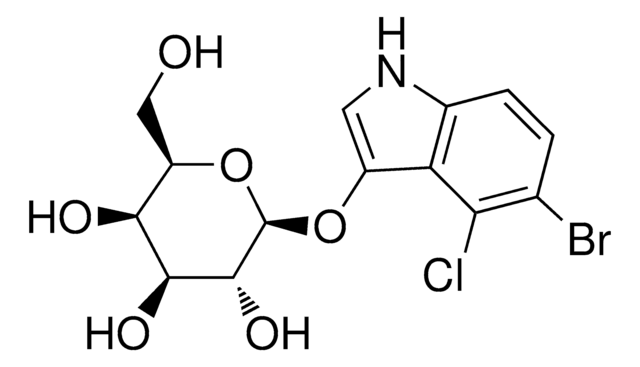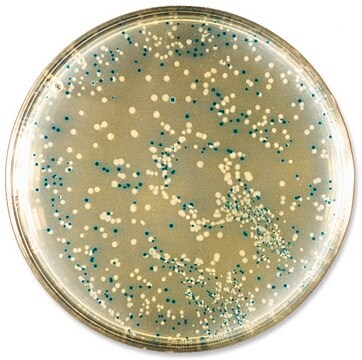Key Documents
D3404
Plasmid DNA from E. coli RRI
pUC19, buffered aqueous solution
About This Item
Polecane produkty
klasa czystości
for molecular biology
Poziom jakości
Postać
buffered aqueous solution
Warunki transportu
dry ice
temp. przechowywania
−20°C
InChI
1S/C15H31N3O13P2/c16-13-1-7(20)11(28-13)5-25-32(21,22)31-9-3-15(18)29-12(9)6-26-33(23,24)30-8-2-14(17)27-10(8)4-19/h7-15,19-20H,1-6,16-18H2,(H,21,22)(H,23,24)
Klucz InChI
AWBASQCACWFTGD-UHFFFAOYSA-N
Szukasz podobnych produktów? Odwiedź Przewodnik dotyczący porównywania produktów
Opis ogólny
Zastosowanie
Działania biochem./fizjol.
Foreign DNA inserted at the MCS abolishes the ability to catabolize lactose. Lactose-positive, ampicillin-resistant colonies (host strain containing plasmid) form blue colonies on plates containing ampicillin and X-Gal; lactose-negative, ampicillin-resistant colonies (host strain containing plasmid with foreign DNA inserted at the MCS) form white colonies on this medium. The orientations of the MCS regions in the pUC plasmids are analogous to those of the corresponding M13 phage.
Komponenty
Zasada
Kod klasy składowania
10 - Combustible liquids
Klasa zagrożenia wodnego (WGK)
WGK 1
Temperatura zapłonu (°F)
Not applicable
Temperatura zapłonu (°C)
Not applicable
Certyfikaty analizy (CoA)
Poszukaj Certyfikaty analizy (CoA), wpisując numer partii/serii produktów. Numery serii i partii można znaleźć na etykiecie produktu po słowach „seria” lub „partia”.
Masz już ten produkt?
Dokumenty związane z niedawno zakupionymi produktami zostały zamieszczone w Bibliotece dokumentów.
disturbance suppression for nanostructure
imaging
Protokoły
Przygotowanie biodegradowalnych nanocząstek i ich zastosowanie w protokołach transfekcji.
Preparation for biodegradable nanoparticles and their use in transfection protocols .
Nasz zespół naukowców ma doświadczenie we wszystkich obszarach badań, w tym w naukach przyrodniczych, materiałoznawstwie, syntezie chemicznej, chromatografii, analityce i wielu innych dziedzinach.
Skontaktuj się z zespołem ds. pomocy technicznej







